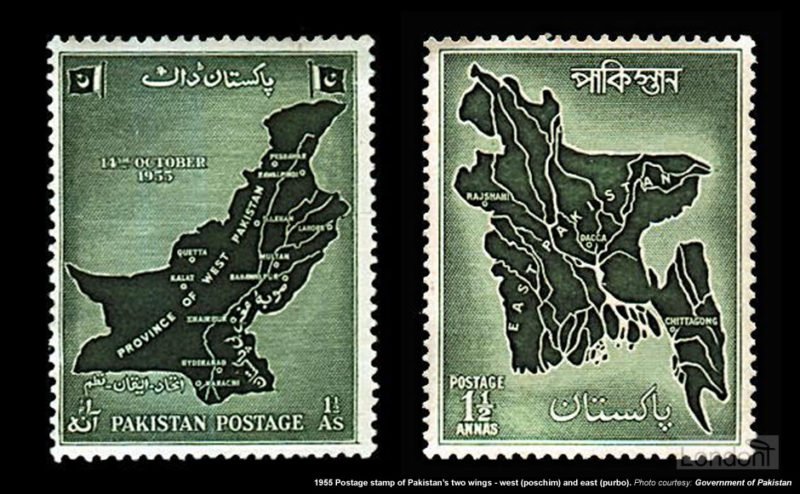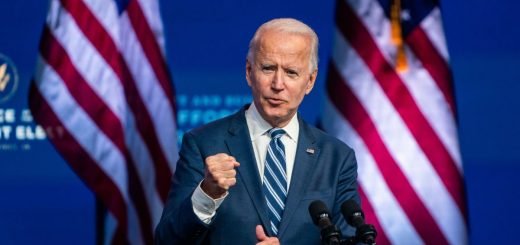Sea of difference between East and West Pakistan

In comparison to West Pakistan, the socio-economic structure of Bangladesh at the time of independence was in an advanced stage because feudal relations had already made rooms for semi-feudal, semi-capitalist relations. The Hindus and the Muslims constituted two distinct sections of the population in Bangladesh. There are social and religious differences between them. Yet, close association and system of fictive kinship have brought them in close contact with each other. It kept the nationalist ideology in the political culture of Bangladesh intact more or less before its independence in December 1971. As it was strong enough in its base, the separate ethnocultural entity of Bengalis had contributed to the forming of political culture, particularly during the colonial days.
The economy of Bangladesh in 1947
In 1947, Eastern Pakistan was economically stronger than its Western part but as latter’s discriminatory policy continued in each and every sphere of economy, it lagged far behind the pace of development in united Pakistan. During two and a half decades of being part of Pakistan, Bangladesh was exploited by West Pakistanis almost in the same fashion, as had been by the British. The continued economic disparity finally brought forth the concept of two-economy to the forefront. The two-economy thesis was propounded by some East Pakistani economists and rested primarily on two points: first, because of its geographical peculiarity. Pakistan did, in fact, have two separate and distinct economy; and second, the economic policy of the Government of Pakistan always worked against the interest of East Pakistan and gave rise to the economic disparity between the two wings of Pakistan.

Thus, the creation of Pakistan seriously damaged trade and economic activity in the eastern region and East Bengal was the worst sufferer. Bangladesh, in terms of national resources, is not such as to develop a self-reliant economy. It has jute and natural gas. In terms of minerals, it is very poor. For coal and iron, it is thoroughly dependent on others. There is not much scope for hydro-electric power, as mostly the region is flat, despite huge availability of water. The disrupted economy and the resultant chaos in East Bengal was one of the factors behind the demand for autonomy and subsequently the clamour for independence.
Religion as a Factor in East and West Pakistan
Despite the fact that religion is very close to one’s being, it has neither been a factor to unite diverse communities nor it has been a sole factor to create politically sovereign identities out of one social community. Though the first division of the Indian sub-continent was made on the basis of religion, substantial religious minorities remained in both the newly created nations-India and Pakistan. In India, the leaders of the national liberation movement had recognised the concept of unity in diversity and tried to carry forward the movement on secular lines. They were opposed to communal demand for the creation of Pakistan and denied the two-nation theory which was being proposed by the British colonialists.
Perhaps on being influenced by India, the national liberation movement in Bangladesh threw off the mask of religion and sought to unite the people with the aim of defending Bengali nationalism, language and culture. In this movement, the humanitarian role played by India, in contrast to the ghastly crimes perpetrated by the West Pakistani military rulers, brought the people of Bangladesh nearer to their Indian brethren into a bond of cordiality and friendship. During the entire period of the liberation, movement religion did not play even the minimal progressive role, as it had already proved its futility in keeping Pakistan united. Reintroduction of religion after the liberation of Bangladesh, as a political tool, was, therefore, not in tune with the objectives of the national liberation movement.
Expressing total solidarity with the principles and objectives of the national liberation movement the first Government of Sheikh Mujibur Rahman, in its historic constitution of 1972 included nationalism democracy secularism and socialism. However, the later developments on the issue made it clear that the secular principle of Bangladesh was planted on a religious society where still people were not in favour of discarding it. Religion was too sacred a trust with the people, which could not be allowed to be polluted by political considerations. Unfortunately, people failed to understand that Bangladesh had emerged as a secular state, not because the religion of the vast majority of the people was in danger, but to ensure the fuller manifestation of its secular values like language and culture in the context of socio-economic development, free from foreign exploitation. Bangladesh’s survival as an Islamic state kept it away from India and put nearer to powers, friendly neither to India nor to Bangladesh.
Role of India in the War of Independence
The Bangladesh war of independence was fought under the leadership of the Awami League who shared almost the same framework of social philosophy as the Indian ruling party of the time. The mixture of a rather populist version of socialism with the reformist vision of state capitalism and ideological adherence to the principle of secular and democratic state brought India under the Congress and Bangladesh under the Awami League within the same general framework of state ideology.

The perceived mutuality of interests between India and Bangladesh took concrete shape during 1971-1975 or till Sheikh Mujibur Rahman was all in all at the helm of affairs. The Post-Mujib period of Bangladesh nourished a strong anti–India feeling which became violent and did not spare even the bilateral issues, such as, the sharing of Ganga waters at Farakka. Keeping in view the geopolitical terms and also because of India’s role in Bangladesh’s national liberation movement it was a difficult task for any government in the country to go the whole hog against India, nevertheless, the fact remains that both, at the government level and with its abetment at the level of media serious attempts were made to undermine friendly relations with India.
However, this difficult task was made easy by the post-1975 regimes of Bangladesh. The new rulers had anti-Indianism as one of its planks, and they immediately embarked upon an anti-Indian tirade. They used irritants not unusual between neighbouring countries as bases for their campaign and used every national and international forum to defame India. Dhaka’s failure to make a point at the Colombo Summit of non-aligned nations was paraded as a success and India’s just criticism of Bangladesh’s attempts to internationalise Farakka issue was branded as an exhibition of frustration, disillusionment and defeat at the Colombo meeting. War hysteria was sought to be created in Bangladesh in which the then ruler Ziaur-Rahman was next to none and said, ‘We are concerned about the aggression being carried out from across the border and also about the deliberate withdrawal of huge quantum of water from the Ganga to the detriment of Bangladesh. We will face up these aggressions at all costs and shall stand up heads erect in full glory of a free nation. Each one of us shall fight arm in hand if need be’.


















